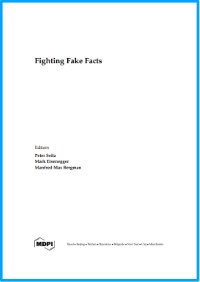By Anni Lietonen, Anniina Jokinen, Natalia Ollus
In recent years, the issue of labour trafficking and exploitation in global supply chains has gained more and more attention. Businesses are under increasing scrutiny from consumers, media, civil society, investors and governments to behave in an ethical manner. However, there has been less focus on local and national structures. It is a common practice for businesses to rely on subcontractors/suppliers, or to use contractual partners who use subcontractors for specialised, project-related or short-term work. In recent years, cases of labour exploitation in supply/subcontracting chains have been uncovered around the world, as well as in Europe. With increased mobility of workers and increasingly complex supply chains, there is a growing need to ensure that all involved parties know their rights and obligations. This can prevent the exploitation of migrant workers and the risk of businesses becoming involved in such scenarios. This risk management toolkit has been developed in the context of the EU-funded FLOW-project. Its purpose is to give companies a brief overview of what labour exploitation and trafficking are, as well as to demonstrate the risks for businesses, and how involvement in such scenarios can be effectively avoided. These tools focus on the practical implementation of due diligence procedures, such as gathering information through worker-led monitoring and grievance mechanisms. The aim is to provide “hands-on” measures for businesses that can be used to navigate and control complex supply chain networks, especially in a local, national and intra-European context with the focus on preventing exploitation and trafficking. The measures include conducting a risk assessment, drafting an anti-trafficking strategy, screening contractual partners, incorporating specific contractual clauses and organising workplace assessments/inspections concerning the activities of subcontractors or other contractual partners. To supplement this toolkit, a Normative Framework Guide (HEUNI Publication Series No. 94) has also been developed as part of the FLOW-project, which provides a summarised overview of existing legal frameworks outlining businesses' responsibilities with regard to human rights, with a focus on labour exploitation and human trafficking. Outsourcing of work through subcontracting and the use of temporary workers in overly flexible employment relationships makes it more difficult for companies to assess the working conditions under which goods and services are produced (FRA 2015; Jokinen & Ollus 2019). The more layers in the supply chain, the more difficult it is to survey how the subcontractors carry out their business. In the worst-case scenario, legitimate business structures and lengthy supply chains may reveal serious forms of exploitation or even human trafficking. Concern over workers’ rights at all levels of the supply chain, in particular at the lower end of a subcontracting chain, should be included in responsible business policies. Committing to respecting Business and Human Rights (BHR) agreements alone cannot guarantee that a company is not unknowingly involved in labour exploitation or trafficking. Proactive businesses can mitigate such risks more efficiently by engaging in risk management, inspections and monitoring of working conditions. Who should use this tool? Managers, experts, and representatives of: ○ Businesses, NGOs and/or organisations that use low-skilled migrant workers through outsourcing, subcontracting, and recruitment companies and labour intermediaries in, e.g., construction, cleaning or catering services ○ Businesses working in risk sectors where labour exploitation or human trafficking have been identified ○ Public procurement units working for states, municipalities and/or state enterprises ○ Corporate Social Responsibility experts and networks Businesses should take steps to strengthen their role in regulating the labour supply and in recognising the signs of labour exploitation. Effective and proactive measures to tackle labour exploitation deters criminal enterprises from entering labour supply chains and promotes fair competition and decent work.
Helsinki: HEUNI, 2020. 60p.





















